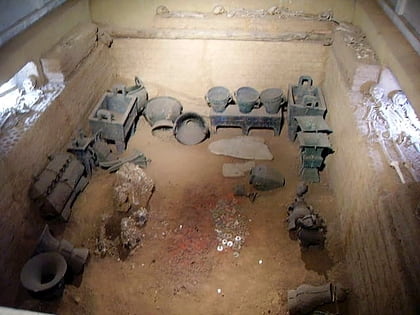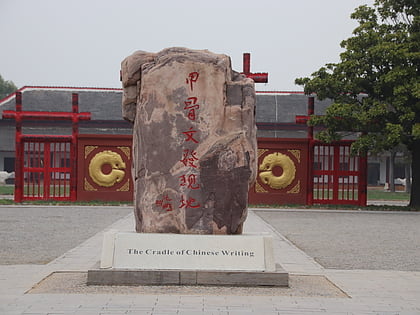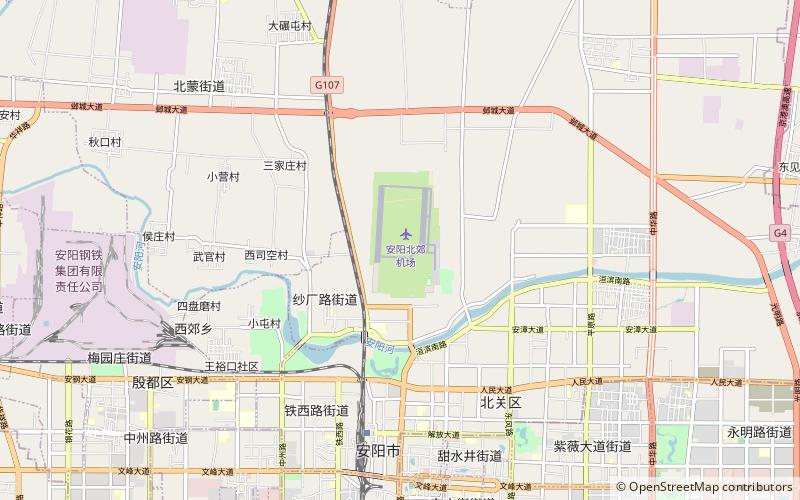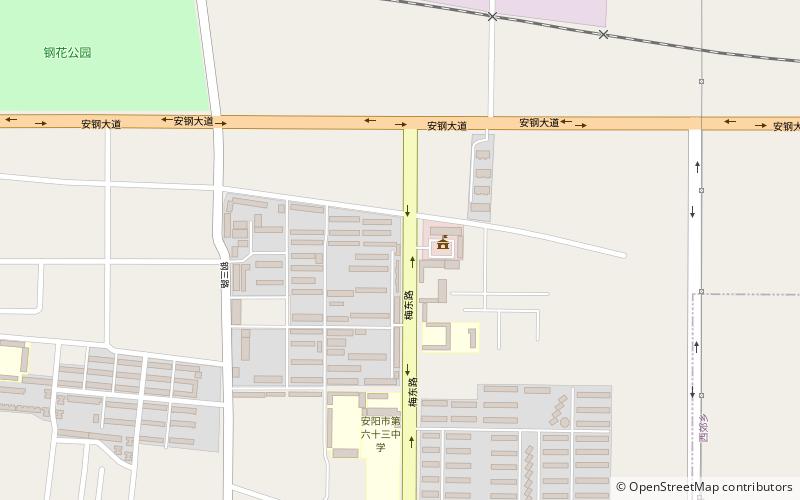Tomb of Fu Hao, Anyang
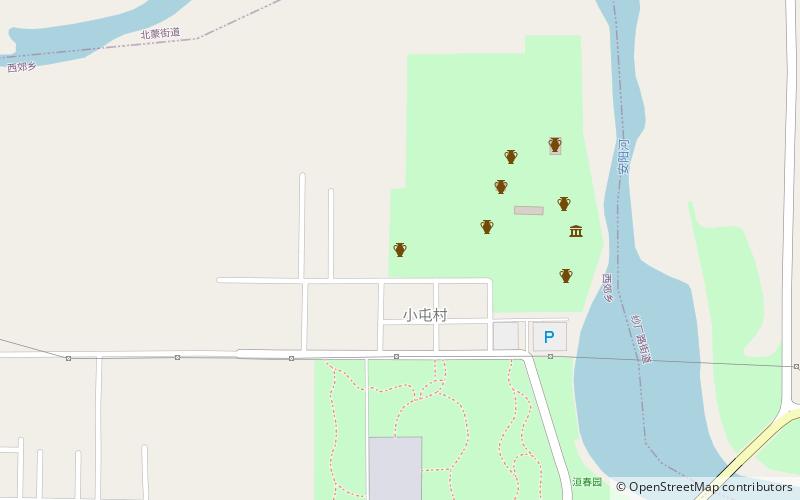

Facts and practical information
Nestled in the ancient city of Anyang, China, the Tomb of Fu Hao presents a remarkable journey into the country's storied past. As the final resting place of one of the most powerful women in Chinese history, this archaeological site offers a unique glimpse into the life and times of the Shang Dynasty.
Discovered in 1976, the tomb is one of the most intact royal tombs to have been unearthed in China. Fu Hao was a consort of King Wu Ding and lived during the 13th century BC. She was also a military leader and high priestess, and her tomb reflects her prestigious status. Unlike many other royal graves of the period, it had escaped the notice of tomb raiders over the millennia, allowing historians a pristine look into the Shang era.
The tomb is relatively small, measuring 5.6 by 4 meters, but it is densely packed with over 1,600 artifacts, including jade objects, bone carvings, and bronze ware. The most impressive finds are the 200 bronze vessels and weapons, which are masterpieces of the period's metallurgy and craftsmanship. The presence of these items suggests that Fu Hao was not only a powerful figure in life but also revered in death.
For the average tourist, a visit to the Tomb of Fu Hao is an opportunity to stand in the presence of ancient Chinese history. The site is part of the larger Yinxu archaeological area, which was the last capital of the Shang Dynasty and is now a UNESCO World Heritage site. While there, visitors can also explore the remnants of the ancient city, including oracle bone pits and other royal tombs.
Anyang
Tomb of Fu Hao – popular in the area (distance from the attraction)
Nearby attractions include: Yinxu, Huanbei, Yindu District.
